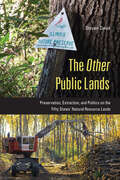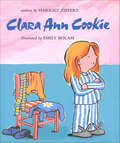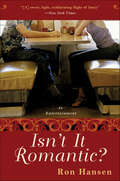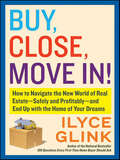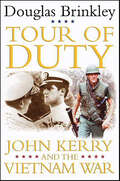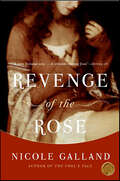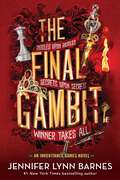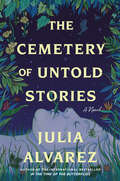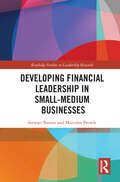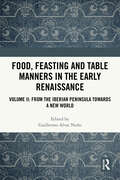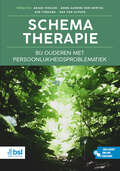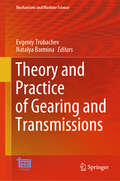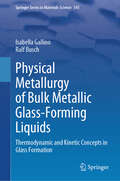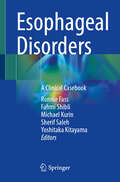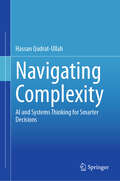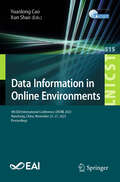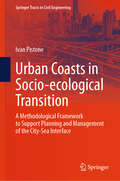- Table View
- List View
Telugu class 7 - Andhra Pradesh Board: తెలుగుబాట ఏడవ తరగతి ఆంధ్ర ప్రదేశ్ బోర్డ్
by State Council of Educational Research and Training Andhra Pradeshతెలుగుబాట - ఏడవ తరగతి పాఠ్యపుస్తకం ఈ పుస్తకం జాతీయ విద్యా ప్రణాళికకు అనుగుణంగా రూపొందించబడింది. ఇది విద్యార్థులలో భాషా నైపుణ్యాలు, సృజనాత్మకత, సామాజిక అవగాహనలను పెంపొందించేందుకు ఉపయుక్తంగా ఉంటుంది. ఈ పాఠ్యపుస్తకంలో భాషకు సంబంధించిన పాఠాలు, పద్యాలు, వ్యాసాలు, పదవిజ్ఞానాలు ఉంటాయి. కథలు, నాటకాలు, నాటకీకరణ, ప్రాజెక్టు పనుల ద్వారా విద్యార్థులలో వ్యక్తిత్వ వికాసం, జాతీయభావం పెంపొందించడమే లక్ష్యం. పుస్తకంలో అక్షరం, మాయాకంబళి వంటి పాఠాలు విద్యార్థులలో ఆత్మవిశ్వాసాన్ని, సృజనాత్మకతను పెంపొందించేవిగా ఉన్నాయి. అందించబడిన కాంపోజిట్ కోర్సు ద్వారా భాషా అభ్యాసాన్ని మెరుగుపరచడం, నైతిక విలువలు పెంపొందించడం ఈ పుస్తకం ముఖ్య ఉద్దేశ్యాలు.
Journal of the Association of Environmental and Resource Economists, volume 12 number 2 (March 2025)
by Journal of the Association of Environmental and Resource EconomistsThis is volume 12 issue 2 of Journal of the Association of Environmental and Resource Economists. As an official research journal of the Association of Environmental and Resource Economists, JAERE publishes papers that are devoted to environmental and natural resource issues. The journal's principal mission is to provide a forum for the scholarly exchange of ideas in the intersection of human behavior and the natural environment. Focusing on original, full-length research papers that offer substantial new insights for scholars of environmental and resource economics, JAERE presents a range of articles that are relevant for public policy, using approaches that are theoretical, empirical, or both.
The Other Public Lands: Preservation, Extraction, and Politics on the Fifty States' Natural Resource Lands
by Steven DavisFor most Americans, state lands are the most readily accessible type of public land; however, despite their ubiquity, they remain largely terra incognita. The Other Public Lands is a primer on state public lands and the political dynamics that underlie their management. Offering a wide-angle overview, Steven Davis focuses on how states prioritize competing claims related to conservation, resource development, tourism, recreation, and finances. The Other Public Lands looks at both differences and common patterns in state land management, including the structure of natural resource agencies. Davis examines the privatization and commercialization of state parks, and the tensions between recreation, revenue and the preservation of biodiversity and natural landscapes. He also raises issues about equity, access, appropriate development, and ecological health. Chapters review state forests, state wildlife management areas, and school trust lands. In addition, the roles of interest groups, the courts, and agency culture and behavior are compared and analyzed both between states and the federal government and between states with differing approaches to specific issues. As there has been a demand to transfer at least some federal lands to the states, The Other Public Lands concludes with an appraisal of whether states could handle this transfer and goes on to suggest ways to ensure adequate access in an era of increased demand.
Clara Ann Cookie
by Harriet Ziefert"When Clara Ann Cookie had to get dressed, she got grumpy and grouchy and very distressed." Getting dressed in the morning is simply too much for Clara Ann to face. Lucky for her she has a resourceful mother who comes up with a clever face-making game to help make the morning routine a lot less monotonous and considerably more fun. Harriet Ziefert portrays this all too common struggle between parent and child with wit and humor, while Emily Bolam's artwork captures Clara Ann's emotions perfectly. Children will delight in making faces along with Clara Ann as she gets dressed.
Isn't It Romantic?: An Entertainment
by Ron HansenOnce again, acclaimed novelist Ron Hansen demonstrates his masterful versatility as a writer, with Isn't It Romantic?, a screwball comedy in the tradition of filmmaker Preston Sturges. In this charming entertainment, mistaken identities, botched schemes, and hilarious misunderstandings all play a part as Parisian sophistication collides with the affability and simple pleasures of the Great Plains.Touring America was Natalie's idea. But she had not planned on being accompanied on a cross-country bus by her playboy fiancé, Pierre. Nor had they anticipated being stranded in Seldom, Nebraska, population 395.But that is exactly what happens to this French couple, and they quickly find themselves being taken in by the obliging citizens of Seldom: Natalie by Mrs. Christiansen, a retired high school teacher who runs a rooming house for women, and Pierre by Owen, a gas station owner and ambitious winemaker in an unlikely part of the world.And here also, the separated couple become enchanted by the locals. Natalie is soon being wooed by Dick Tupper, a handsome and honest rancher with a rambling farmhouse and lots of wide open space. Pierre falls quickly for Iona, a beautiful, no-nonsense waitress in the local diner.Soon everyone is hatching plots to get what they want: Owen needs help from Pierre's world-class wine business if he is ever going to sell his Nebraska vintage; Pierre wants Iona; Natalie thinks she wants Dick Tupper, but maybe it's Dick who wants Iona, and Natalie who wants Pierre? The fun and surprises are many in this playful romance.
The Divers' Game: A Novel
by Jesse BallFrom the inimitable mind of award-winning author Jesse Ball, a novel about an unsettlingly familiar society that has renounced the concept of equality—and the devastating consequences of unmitigated powerThe old-fashioned struggle for fairness has finally been abandoned. It was a misguided endeavor. The world is divided into two groups, pats and quads. The pats may kill the quads as they like, and do. The quads have no recourse but to continue with their lives. The Divers’ Game is a thinly veiled description of our society, an extreme case that demonstrates a truth: we must change or our world will collapse. What is the effect of constant fear on a life, or on a culture? The Divers’ Game explores the consequences of violence through two festivals, and through the dramatic and excruciating examination of a woman’s final moments.Brilliantly constructed and achingly tender, The Divers’ Game shatters the notion of common decency as the binding agent between individuals, forcing us to consider whether compassion is intrinsic to the human experience. With his signature empathy and ingenuity, Jesse Ball’s latest work solidifies his reputation as one of contemporary fiction’s most mesmerizing talents.
Buy, Close, Move In!: How to Navigate the New World of Real Estate—Safely and Profitably—and End Up with the Home of Your Dreams
by Ilyce GlinkBuy, Close, Move In! is the home buyer’s and seller’s ultimate guide to what’s new and different in today’s real estate market. Written by Ilyce Glink—one of the country’s best-known consumer real estate advocates, whose nationally syndicated column, “Real Estate Matters,” appears in more than 125 newspapers and websites—Buy, Close, Move In! is an indispensible tool for understanding the new rules of home ownership in a radically altered real estate environment.
Tour of Duty: John Kerry and the Vietnam War
by Douglas BrinkleyOne of our most acclaimed historians explores the decorated military service of one of America’s most intriguing politicians—the leading Democratic presidential candidate for 2004—and its profound effects on his career and lifeIn Tour of Duty, Brinkley explores Senator John Kerry’s career and deftly deals with such explosive issues as U.S. atrocities in Vietnam and the bombing of Cambodia. Using new information acquired from the recently released Nixon tapes, Brinkley reveals how White House aides Charles Colson and H.R. Haldeman tried to discredit Kerry. Refusing to be intimidated, Kerry started running for public office, eventually becoming a U.S. Senator from Massachusetts. Covering more than four decades, this is the first full-scale definitive account of Kerry’s journey from war to peace. In writing this riveting, action-packed narrative, Brinkley has drawn on extensive interviews with virtually everyone who knew Kerry well in Vietnam. Kerry also relegated to Brinkley his letters home from Vietnam and his voluminous “war notes” journals, notebooks, and personal reminiscences written during and shortly after the war. This material was provided without restriction, to be used at Brinkley’s discretion, and has never before been published.
What's Right with Islam Is What's Right with America: A New Vision for Muslims and the West
by Feisal Abdul RaufAn American imam offers answers for today's toughest questions about Islam, and a vision for a reconciliation between Islam and the West.One of the pressing questions of our time is what went wrong in the relationship between Muslims and the West. Continuing global violence in the name of Islam reflects the deepest fears by certain Muslim factions of Western political, cultural, and economic encroachment. The solution to the current antagonism requires finding common ground upon which to build mutual respect and understanding. Who better to offer such an analysis than an American imam, someone with a foot in each world and the tools to examine the common roots of both Western and Muslim cultures; someone to explain to the non-Islamic West not just what went wrong with Islam, but what's right with Islam.Focused on finding solutions, not on determining fault, this is ultimately a hopeful, inspiring book. What's Right with Islam systematically lays out the reasons for the current dissonance between these cultures and offers a foundation and plan for improved relations. Wide-ranging in scope, What's Right with Islam elaborates in satisfying detail a vision for a Muslim world that can eventually embrace its own distinctive forms of democracy and capitalism, aspiring to a new Cordoba - a time when Jews, Christians, Muslims, and all other faith traditions will live together in peace and prosperity.
Revenge of the Rose
by Nicole GallandWelcome to a world of intrigue of the most intriguing kind, where emperors and popes desperately vie for power, even as their subjects and servants engage in behind-the-scenes machinations of their own.The Holy Roman Empire circa 1200 A.D.Impoverished young knight Willem of Dole believed he would spend his life in rural Burgundy, struggling to provide for his widowed mother and younger sister, Lienor. And so it's with surprise—and apprehension—that he obeys a summons to the magnificent court of Konrad, Holy Roman Emperor, whose realm spans half of Europe. Willem's mischievous friend Jouglet, Konrad's favorite minstrel, is no doubt behind it somehow . . . but what's in it for Jouglet?Court life is overwhelming to the idealistic young Willem, who is shocked by the behavior of his fellow knights, for whom chivalry is a mere game. Yet under Jouglet's witty, relentless tutelage, the naïve knight quickly rises in Emperor Konrad's esteem—until suddenly his sister, Lienor, becomes a prospect for the role of Empress. This unexpected elevation of the sibling "nobodies" delights Jouglet, but threatens three powerful—and dangerous—men at the court: the Emperor's brother, Cardinal Paul, who has in mind a different bride for Konrad; the Emperor's uncle, Alphonse, Count of Burgundy, who would keep secret certain things that only Willem can reveal; and most especially the Emperor's own steward Marcus, who is hopelessly in love with Konrad's cousin Imogen. For if Willem's star keeps rising, Imogen will be betrothed to the knight by royal decree—and Willem's star will surely continue to rise, unless Marcus figures out a way to stop it. But that would entail outscheming clever Jouglet, ablest of schemers.Gossip, secrets, and lies are the fuel of daily life in Konrad's court. As Konrad edges closer to proclaiming Lienor his bride, those around Willem play a perilous game of cat-and-mouse as they attempt to secure their own fortunes, knowing that even the slightest move can shift the playing field entirely. And through it all, Jouglet remains Willem's most maddening yet staunchest ally. But what, really, does Jouglet stand to gain . . . or lose?Transporting the reader to the brilliant, conniving heart of the largest empire of medieval Europe, Revenge of the Rose is a novel rich in irony and tongue-in-cheek wit, and reveals all the grit and color, politics and passion, of court life in the Holy Roman Empire.
Ondolle Maatu Bhaga- 3: ಒಂದೊಳ್ಳೆ ಮಾತು ಭಾಗ- ೩
by Roopa Gururajಲೇಖಕಿ ರೂಪಾ ಗುರುರಾಜ್ ಅವರ ಅಂಕಣ ಬರಹಗಳ ಸಂಕಲನ ʻಒಂದೊಳ್ಳೆ ಮಾತು-3ʼ. ವಿಶ್ವವಾಣಿ ಪತ್ರಿಕೆಯಲ್ಲಿ ಪ್ರಕಟವಾದ ದೈನಂದಿನ ಅಂಕಣಗಳನ್ನು ಇಲ್ಲಿ ಒಟ್ಟುಗೂಡಿಸಿ ಪುಸ್ತಕದ ರೂಪದಲ್ಲಿ ಹೊರ ತಂದಿದ್ದಾರೆ.
Policing the Pandemic: How Public Health Becomes Public Order
by Lambros Fatsis Melayna LambThe COVID-19 pandemic has highlighted the inadequacies of the state’s response to public health and public order issues through deeply flawed legislation. Written in the context of the #BlackLivesMatter protests, this book explores why law enforcement responses to a public health emergency are prioritised over welfare provision and what this tells us about the state’s criminal justice institutions. Informing scholarly, civic and activist thinking on the political nature of policing, it reveals how increasing police powers disproportionately affects Black people and suggests alternative ways of designing public safety beyond a law enforcement context.
Snobbery: The practices of distinction (21st Century Standpoints)
by David MorganSnobbery is a more serious matter than some may think: the arguments around Brexit and Trump show that accusations of snobbery have become part of political discourse and public sentiment, building social divisions and reflecting deeper issues of class inequality. Social class is not simply about wealth, health and life-chances but also about everyday social experience, such as being included or excluded. As social inequality grows, snobbery is becoming ever more pertinent. This book takes a fresh and engaging look at this key issue, drawing on literature, popular culture and autobiography as well as sociology and history. David Morgan explores the complex history and different varieties of snobbery as well as its all-pervasive character to reveal why, despite claims about the openness of our society, it is still a matter of public concern.
The Final Gambit (The Inheritance Games #3)
by Jennifer Lynn BarnesOVER 5 MILLION COPIES SOLD OF THE #1 BESTSELLING SERIES!Avery&’s fortune, life, and loves are on the line in the game that everyone will be talking about. To inherit billions, all Avery Kylie Grambs has to do is survive a few more weeks living in Hawthorne House. The paparazzi are dogging her every step. Financial pressures are building. Danger is a fact of life. And the only thing getting Avery through it all is the Hawthorne brothers. Her life is intertwined with theirs. She knows their secrets and they know her. But as the clock ticks down to the moment when Avery will become the richest teenager on the planet, trouble arrives in the form of a visitor who needs her help—and whose presence in Hawthorne House could change everything. It soon becomes clear that there is one last puzzle to solve, and Avery and the Hawthorne brothers are drawn into a dangerous game against an unknown and powerful player. Secrets upon secrets. Riddles upon riddles. In this game, there are hearts and lives at stake—and there is nothing more Hawthorne than winning.**Don&’t miss a moment of The Inheritance Games Saga, including the Grandest Game, the thrilling new series set in the world of the Inheritance Games. Reading them all? The ideal reading order is: The Inheritance Games, The Hawthorne Legacy, The Final Gambit, The Brothers Hawthorne, The Grandest Game, Games Untold, and Glorious Rivals. Looking for more unputdownable reads from Jennifer Lynn Barnes? Check out The Naturals series (The Naturals, Killer Instinct, All In, Bad Blood, and the enovella, Twelve), The Debutantes duet (Little White Lies, Deadly Little Scandals), and The Lovely and the Lost
The Cemetery of Untold Stories: A Novel
by Julia AlvarezLiterary icon and great American novelist Julia Alvarez, bestselling author of In the Time of the Butterflies and How the García Girls Lost Their Accents, returns with a luminescent novel about storytelling that reads like an instant classic. &“Only an alchemist as wise and sure as Alvarez could swirl the elements of folklore and the flavor of magical realism around her modern prose and make it all sing . . . Lively, joyous . . . often witty, occasionally somber and elegiac.&” —Luis Alberto Urrea, The New York Times Book Review"Engaging and written in a playful, crystal-clear prose, this novel explores friendship, love, sisterhood, living between cultures, and how people can be haunted by the things they don&’t finish . . . Entertaining . . . Heartwarming." —Gabino Iglesias, The Boston Globe **Named a Most Anticipated Book by the New York Times, Washington Post, Today.com, Goodreads, B&N Reads, Literary Hub, HipLatina, BookPage, BBC.com, Zibby Mag, and more** Alma Cruz, the celebrated writer at the heart of The Cemetery of Untold Stories, doesn&’t want to end up like her friend, a novelist who fought so long and hard to finish a book that it threatened her sanity. So when Alma inherits a small plot of land in the Dominican Republic, her homeland, she has the beautiful idea of turning it into a place to bury her untold stories—literally. She creates a graveyard for the manuscript drafts and the characters whose lives she tried and failed to bring to life and who still haunt her. Alma wants her characters to rest in peace. But they have other ideas and soon begin to defy their author: they talk back to her and talk to one another behind her back, rewriting and revising themselves. Filomena, a local woman hired as the groundskeeper, becomes a sympathetic listener to the secret tales unspooled by Alma's characters. Among them, Bienvenida, dictator Rafael Trujillo's abandoned wife who was erased from the official history, and Manuel Cruz, a doctor who fought in the Dominican underground and escaped to the United States. The Cemetery of Untold Stories asks: Whose stories get to be told, and whose buried? Finally, Alma finds the meaning she and her characters yearn for in the everlasting vitality of stories. Julia Alvarez reminds us that the stories of our lives are never truly finished, even at the end.
Developing Financial Leadership in Small-Medium Businesses (Routledge Studies in Leadership Research)
by Stewart Barnes Malcolm ProwleMany small-medium enterprises (SMEs) are very small organisations comprising mainly single-person and micro-businesses but, in the United Kingdom, there are around 250,000 small-medium businesses (SMBs) which are substantial businesses with turnovers of millions or tens of millions of pounds. A key requirement for thriving SMBs is effective leadership throughout the organisation. One crucial aspect, which is often overlooked, is that of financial leadership. Financial management in SMBs is often seen as a technique-based activity whereby finance staff have a limited role preparing annual financial accounts and disseminating financial information to key individuals in the organisation. They may act reactively by responding to requests for specific financial information. On the other hand, strong financial leadership is proactive, constructive and innovative and plays a critical role in ensuring that organisations stay financially adaptable and can build resilience and sustainability in today’s fierce market. The most effective financial leaders have a sophisticated and thorough understanding of their organisation’s financial health, and they make decisions grounded in financial realities to use that information in their communication to demonstrate the strategic connection between money, mission and purpose. This research volume asserts that understanding the importance of utilising robust financial management approaches and financial information in making business decisions and assessing business performance is the key. This is especially relevant for SMBs, as they can have a significant influence on countries’ economies. It will therefore be of interest to researchers, academics, practitioners and advanced students in the fields of leadership, financial management, entrepreneurship and strategy.
Food, Feasting and Table Manners in the Early Renaissance: Volume II: From the Iberian Peninsula towards a New World
by Guillermo Alvar NuñoThe acquisition of table manners and rhetorical skills, the interaction between medicine and eating, and the presence of food in literature and religion shaped Peninsular societies and connected them to a Western European background during the Middle Ages. The Renaissance, however, marked a turning point in world history, and the reader will learn how eating evolved in the kingdoms of Spain and Portugal during the early Renaissance in fields such as morals, politics, medicine, literature and religion. The book also explains how the cultural conception of food was exported by Iberian explorers to the Americas and Japan.The present volume focuses on a two-fold issue: food as a cultural element that united Mediterranean European society, and food as a cultural encounter between European explorers and new worlds during the early Renaissance. Therefore, this volume continues the themes introduced in the previous monograph, Food, Feasting and Table Manners in the Late Middle Ages: Volume I: The Iberian Peninsula in the European Context, but takes into account the new, global scale of the era.Readers will find here a panorama of what, and how, people ate in Mediterranean Europe during the fifteenth and sixteenth centuries and learn how cultural aspects of food were exported to the new lands that were explored during the Age of Discovery.
Prince of Underwhere
by Bruce HaleIt's tough to be ZeKe.He's got his hands full: There is his prissy, know-it-all twin sister; his mean cousin Caitlyn, who's house-sitting for his missing parents; and a bully making life tough at school (as though it wasn't hard enough already). And now, thanks to a stinky, scruffy, good-for-nothing talking cat, he's also got to cope with zombies, midget freedom fighters, devious spies, superstar rappers, and a whole weird world beneath our own where people wear their underwear on the outside of their clothes.
Schematherapie bij ouderen met persoonlijkheidsproblematiek
by Bas Van Alphen Arjan Videler Anne-Aurore den Hertog Kim TurksmaDit boek laat zien hoe je schematherapie kunt toepassen bij ouderen met persoonlijkheidsproblematiek. Het kan gebruikt worden voor zowel individuele als groepstherapie. Het boek biedt veel praktische handvatten, voor zowel de ggz als het verpleeghuis. Schematherapie bij ouderen met persoonlijkheidsproblematiek laat aan de hand van casuïstiek uit de klinische praktijk en onderbouwd met actuele wetenschappelijke evidentie zien dat schematherapie een waardevolle behandeling is, ongeacht leeftijd. Wanneer kies je voor een behandeling in een groep of individueel? Hoe betrek je naasten? Wat is de meerwaarde van de inzet van vaktherapie? Hoe motiveer je ouderen en wat kun je doen als een schematherapiebehandeling stagneert? Hoe beleeft een oudere zelf een langdurig therapietraject? Niet eerder verscheen er een boek over het jonge vakgebied van schematherapie bij ouderen. Het boek is bestemd voor psychologen, psychiaters, vaktherapeuten en andere professionals, die werkzaam zijn in de ggz of in een verpleeghuis. De redactie, prof. dr. Arjan Videler, Anne-Aurore de Hertog, Kim Turksma en prof. dr. Bas van Alphen werkt al jaren met schematherapie bij ouderen en is actief als clinicus, docent en onderzoeker.
Theory and Practice of Gearing and Transmissions (Mechanisms and Machine Science #172)
by Natalya Barmina Evgeniy TrubachevThis book is the fifth volume in the series devoted to gear engineering and computer-aided design, production, testing, and education. It comprises fundamental and applied research contributions by scientists and gear experts from all over the world and covers recent developments and historical achievements in various spheres of mechanical engineering related to different kinds of gears, transmissions, and drive systems. It gathers contributions describing the advanced approaches to research, design, testing, and production of practically all common and new kinds of gears for a vast number of advanced applications. Special attention is paid to tribology issues, computer-aided simulation of various gears, strength analysis, and aspects of advanced manufacturing of gears and gearboxes.
Physical Metallurgy of Bulk Metallic Glass-Forming Liquids: Thermodynamic and Kinetic Concepts in Glass Formation (Springer Series in Materials Science #341)
by Isabella Gallino Ralf BuschThis book deepens the current understanding of the thermodynamics and kinetics of metallic glass-forming liquids, and their connection with the glass-formation process in terms of fundamental physical metallurgy concepts. It surveys and reports on the progress made in the last few decades to access the ultra-viscous liquid state of thermally stable bulk metallic glass (BMG) forming alloys and study the changes in atomic structure, viscosity, and enthalpy during the vitrification including physical aging.Featuring a comprehensive look at the physical properties of the undercooled liquid in the ultra-viscous state at temperatures near the glass transition, the book reports on detailed investigations of the thermodynamic functions, viscosity, volume, relaxation time, and structural ordering in the undercooled liquid. Additionally, it introduces state-of-the-art in-situ characterization tools such as chip-calorimetry, synchrotron x-ray diffraction, and x-ray photon correlation spectroscopy as applied to novel studies of liquid–liquid transitions in the supercooled liquid and in the vicinity of the glass transition, and establishes these common, if not universal, phenomena in BMG-forming alloys.This book is intended for researchers, graduate students, and professionals in the fields of materials science, physical metallurgy, and condensed matter physics, who are interested in the thermodynamics and kinetics of metallic glass-forming liquids and their connection with the glass formation process.
Esophageal Disorders: A Clinical Casebook
by Ronnie Fass Fahmi Shibli Michael Kurin Sherif Saleh Yoshitaka KitayamaThis clinical casebook provides a comprehensive yet concise state-of-the art review of esophageal disorders. Presented in an easy-to-read, case-based format, each case focuses on a clinical scenario commonly encountered in practice, including history, diagnostic tests and detailed discussion, enhanced by many endoscopic photos, x-rays, CT scans, ultrasound and motility tests. More than 30 case scenarios include the evaluation, diagnosis and management of achalasia, diffuse esophageal spasm, ineffective esophageal motility, esophagogastric junction outflow obstruction, absent contractility, gastroesophageal reflux disease, eosinophilic esophagitis and others. Utilizing highly illustrative case material, Esophageal Disorders: A Clinical Casebook is a valuable resource for practicing gastroenterologsts, surgeons, primary care physicians, trainees (fellows and residents), medical students and other health care personnel.
Navigating Complexity: AI and Systems Thinking for Smarter Decisions
by Hassan Qudrat-UllahThis book, “Navigating Complexity: AI and Systems Thinking for Smarter Decisions” delves into the integration of Artificial Intelligence (AI) and systems thinking to enhance decision-making in complex and dynamic environments. Aimed at professionals, researchers, and academics in fields such as management, healthcare, sustainability, and public policy, it provides a comprehensive exploration of how these two approaches can be synergistically employed. The main topics include the theoretical foundations of complexity science, the practical application of AI and systems thinking tools, and real-world case studies demonstrating their combined use. These topics are crucial as they address the need for advanced methodologies to navigate and manage the increasing complexity in modern decision-making scenarios. The book seeks to solve the problem of effectively managing complexity by offering innovative frameworks and models that integrate AI’s data-driven capabilities with systems thinking’s holistic approach. This integration is essential for improving decision-making processes across various domains, providing readers with actionable insights and tools to tackle contemporary challenges.
Data Information in Online Environments: 4th EAI International Conference, DIONE 2023, Nanchang, China, November 25–27, 2023, Proceedings (Lecture Notes of the Institute for Computer Sciences, Social Informatics and Telecommunications Engineering #515)
by Yuanlong Cao Xun ShaoThis book constitutes the refereed proceedings of the 4th EAI International Conference on Data Information in Online Environments, DIONE 2023, held in Nanchang, China, during November 25-27, 2023. The 21 full papers were carefully reviewed and selected from 81 submissions.The papers are grouped in thematic sessions as follows: the application of artificial intelligence: the new era of computer network by using machine learning, a caching strategy using deep q-learning for multi-access edge computing users, a deep reinforcement learning-based content updating algorithm for high definition map edge caching, advanced technology in computing, emerging technologies and applications in networks and management.
Urban Coasts in Socio-ecological Transition: A Methodological Framework to Support Planning and Management of the City-Sea Interface (Springer Tracts in Civil Engineering)
by Ivan PistoneThis book delves into the concept of city-sea interface as a space of strong physical, ecological, social and functional connection between the edge of the city and the edge of the water, recalling the idea of an urban amphibious, in relation to its flexibility to community, environmental and management issue that prevent the sustainable development of urban coasts. In particular, the volume relates the spatial planning of littoral spaces with the demands of contemporary urban coastal society, since such complex places constitute crucial hubs for the fruition of coastal ecosystem services. The work explores these topics in the Euro-Mediterranean context, with regard to densely urbanised land-water areas through a methodological framework. A legal analysis describes the main coastal governance and Maritime Spatial Planning guidelines and how they are incorporated in national littoral management systems; the geo-spatial approach defines a spatial data model for the socio-environmental features of the interface; finally, the psycho-social approach aims at studying the social representations in relation to accessibility, uses and planning adaptation. This framework is proposed as a benchmarking tool: specifically, it has been applied to Marseille and Naples, two similar Mediterranean cities with complex city-sea interfaces. Moreover, it may also support the implementation of coastal-maritime planning at a local scale.


